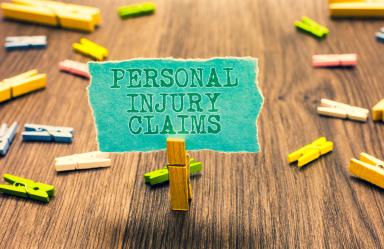How To File a Personal Injury Lawsuit

Filing a personal injury lawsuit is often necessary for individuals to seek compensation for injuries and damages caused by another party's negligence or intentional acts. According to the National Center for State Courts, an estimated 400,000 personal injury claims are filed annually. While only 4% of these cases make it to court, it's crucial to understand the process and legal resources available if you are considering legal action. This article will provide a step-by-step guide on filing a personal injury lawsuit and offer insights and types to help you navigate the process.
How Long Do I Have to File a Personal Injury Lawsuit?
The timeline for filing a personal injury lawsuit varies depending on the jurisdiction and the type of case. Generally, the statute of limitations for personal injury claims is between one to three years from the date of the injury. However, there are situations where this timeline may change. For example, if the person dies due to injuries after the standard two-year statute of limitations, there may be a different timeline for filing a wrongful death claim. Additionally, if you're suing an institution versus an individual, such as a government entity, the timeframe for filing a claim may be shorter and involve additional requirements, such as filing a notice of claim. Therefore, it's essential to consult with a personal injury attorney in your jurisdiction to determine the applicable statute of limitations and any exceptional circumstances that may affect your case.
How to Start a Personal Injury Lawsuit
A personal injury can be a devastating experience, often resulting in significant physical, emotional, and financial consequences. If you believe that your injury was caused by someone else's negligence or wrongful actions, you may be entitled to compensation for your damages. To pursue a personal injury lawsuit, you should take several necessary steps to ensure that your claim is appropriately presented, and your rights are protected.
1. Seek Medical Attention
Your health and well-being should be your first priority. Seek medical attention immediately, even if the injury seems minor. Some injuries may not be immediately apparent or may worsen over time, so it's crucial to get checked out by a medical professional to ensure that any injuries are correctly diagnosed and treated.
In addition to addressing your health needs, seeking medical attention can provide the necessary documentation of your injuries. This documentation can be essential in establishing a link between the injury and the incident that caused it and can help support your claim for damages. Be sure to follow all medical advice and treatment plans your healthcare provider recommends. Keep detailed records of all medical treatment you receive, including any medications prescribed, physical therapy sessions, and follow-up appointments.
2. Consult with a Personal Injury Attorney
An experienced personal injury attorney can help you understand your rights and legal options, evaluate the strength of your cause, and guide you through the complex legal process. Many attorneys offer free consultations, so it's worth contacting a few to find the right one for you.
During your initial consultation, your attorney will likely ask you to provide a detailed account of the incident that caused your injury and any medical treatment you have received. They may also ask for copies of relevant documentation, such as police reports or medical records. Based on this information, the attorney can help you determine whether you have a viable claim for damages and what the next steps should be.
3. Investigation and Evidence Gathering
To build a strong case, your attorney must gather evidence to support your claim that the at-fault party's actions or negligence caused your injuries. This process may include obtaining witness statements, gathering medical records and bills, obtaining police reports, and other relevant documents. Your attorney may also conduct their own investigation, which may involve hiring experts to analyze the evidence and provide testimony supporting your claim.
Sometimes, your attorney may conduct a site inspection to gather additional evidence. For example, suppose the incident occurred in a public place. In that case, your attorney may inspect the location for any hazards or other factors contributing to your injuries. By carefully gathering and analyzing all available evidence, your attorney can help establish a clear link between the at-fault party's actions or negligence and your injuries and work to secure fair compensation for your damages.
4. Demand Letter
After gathering the necessary evidence, your attorney will send a demand letter to the at-fault party or their insurance company, outlining the details of your claim and the compensation you seek. The demand letter serves as a formal request for payment. It typically includes a detailed account of the incident that caused your injuries and documentation of your damages and medical expenses.
In addition to outlining the details of your claim, the demand letter may also include a deadline for response. The deadline may be negotiable, but it serves as a clear signal to the at-fault party or their insurance company that you are serious about your claim and expect a timely response. The demand letter also provides an opportunity for the parties to negotiate a settlement without the need for a lengthy court battle.
5. Filing the Lawsuit
If a fair settlement cannot be reached through negotiations, the next step in the personal injury claim process is filing a lawsuit. Filing a lawsuit involves submitting a formal complaint to the court, outlining the details of your claim and the compensation you seek. The complaint will typically include a detailed account of the incident that caused your injuries and documentation of your damages and medical expenses. It may also have a list of witnesses and other evidence to support your claim.
Once the complaint is filed, the at-fault party will have a designated response period, typically 30 days. They may file a counterclaim or motion to dismiss the case during this time. After both parties can respond, the discovery phase of the lawsuit begins. This involves both parties gathering evidence and information to build their case, which may include depositions, interrogatories, and requests for documentation.
As the case moves forward, the parties may engage in negotiations in an attempt to settle. The case will proceed to trial if a settlement cannot be reached. During the trial, both parties will present their case before a judge or jury, who will ultimately determine the outcome.
Filing a lawsuit can be a complex and time-consuming process. Working with an experienced personal injury attorney is crucial to ensure your rights are protected, and your claim is presented correctly. An attorney can guide you through each step of the process, help you gather and present evidence, and work to secure fair compensation for your injuries and damages.
How Long Does a Personal Injury Case Take?
The duration of a personal injury case can vary widely, depending on several factors. In general, the complexity of the case and the willingness of the parties to negotiate a settlement can significantly affect the timeline of the lawsuit. Some cases may be resolved within a few months, while others may take several years to reach a conclusion.
Other factors that can impact the duration of a personal injury case include:
The severity of the injuries.
The availability of evidence.
The number of parties involved.
The court's schedule.
Additionally, the laws and regulations of the state where the lawsuit is filed can also affect the timeline of the cause.
Will My Personal Injury Case Go to Court?
Not all personal injury cases go to court. In many cases, the parties can reach a fair settlement through negotiations outside of court. However, a lawsuit may sometimes be necessary to secure fair compensation for your damages.
Factors that can impact whether your personal injury case will go to court include:
The strength of your evidence.
The willingness of the at-fault party to negotiate a settlement.
The court’s schedule.
If the evidence is strong and the at-fault party is unwilling to negotiate a fair settlement, it may be necessary to file a lawsuit to pursue compensation.
Other factors influencing whether a case goes to court include the severity of the injuries, the complexity, and the number of parties involved. If there are multiple parties involved in the incident, it may be more challenging to settle outside of court, and a lawsuit may help to assign liability and determine the appropriate amount of compensation.
Resources for Victims
If you're involved in a personal injury claim or lawsuit, it's essential to have access to reliable legal resources to help you navigate the process. From understanding your rights to filing paperwork, various steps are involved in pursuing a personal injury case. To assist you in this process, here are some critical legal resources that can provide guidance and support throughout your case.
Legal Services Corporation
The Legal Services Corporation (LSC) is a non-profit organization created by Congress in 1974 to fund civil legal aid organizations across the United States. The organization's mission is to ensure that low-income individuals and families can access legal services and representation in civil matters, including personal injury claims and lawsuits.
LSC provides funding to more than 130 civil legal aid organizations across the United States, including legal aid societies, pro bono programs, and other organizations that provide legal assistance to low-income individuals. These organizations offer various legal services, including advice, representation, and advocacy, to help individuals navigate the legal system and secure fair compensation for their damages.
State Bar Associations
State bar associations are professional organizations that represent lawyers licensed to practice in a particular state. These organizations can provide factual information on the legal system and how it works in their state. This can be helpful for individuals navigating the legal system for the first time, as it can be complex and confusing. Some state bar associations offer free or low-cost legal clinics where individuals can receive legal advice and guidance on their personal injury claims or lawsuits.
To locate your state bar association, you can conduct a simple online search using keywords such as “state bar association” followed by the name of their state. The American Bar Association (ABA) also maintains a directory of state and local bar associations on its website, which can be a helpful resource for individuals looking for legal assistance.
Court Websites
Court websites can be invaluable for individuals going through a personal injury claim. These websites offer a wealth of information and resources that can be used to navigate the legal system.
Through their court's website, individuals can learn about filing a claim or lawsuit procedures and the rules that apply to court proceedings. Forms and instructions are often available on these websites, which can save time and money. In addition, individuals can access court opinions and orders on cases that have already been decided, helping them understand how the law is applied in similar cases. Finally, most court websites will have a section for self-represented or pro se litigants, which can be especially helpful if you represent yourself in court.
You can search for your state's court system or local county court online to find your court's website. The National Center for State Courts (NCSC) also provides links to court websites for each state and territory in the United States.
Expertise.com StaffAuthor
Step into the world of Expertise.com, your go-to hub for credible insights. We don't take accuracy lightly around here. Our squad of expert reviewers, each a maestro in their field, has given the green light to every single article you'll find. From rigorous fact-checking to meticulous evaluations of service providers, we've got it all covered. So feel free to dive in and explore. The information you'll uncover has been stamped with the seal of approval by our top-notch experts.




